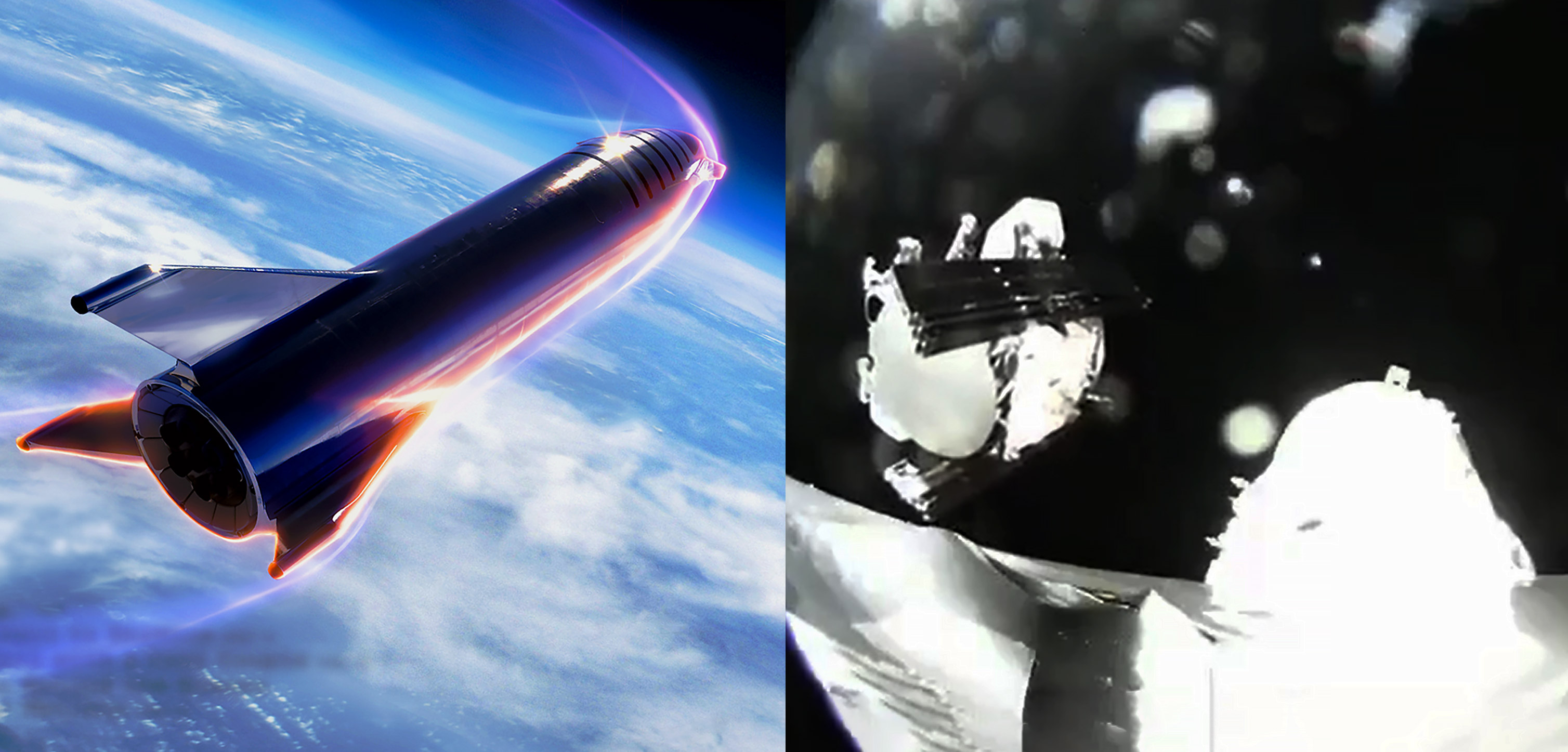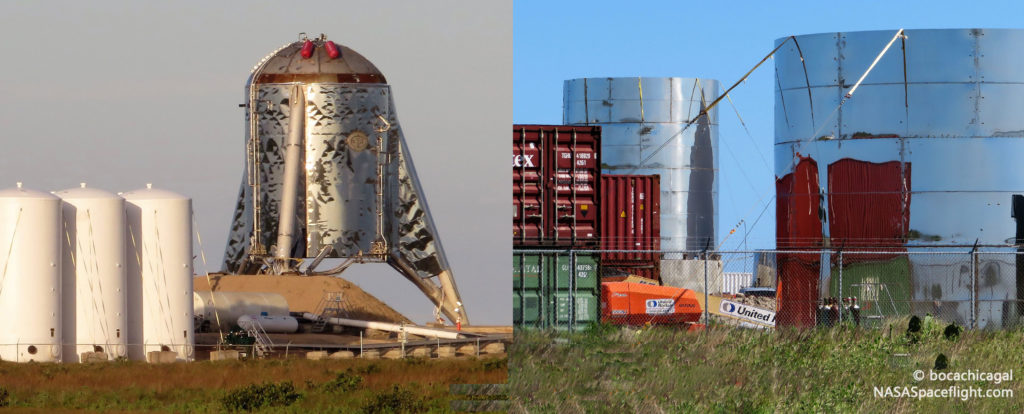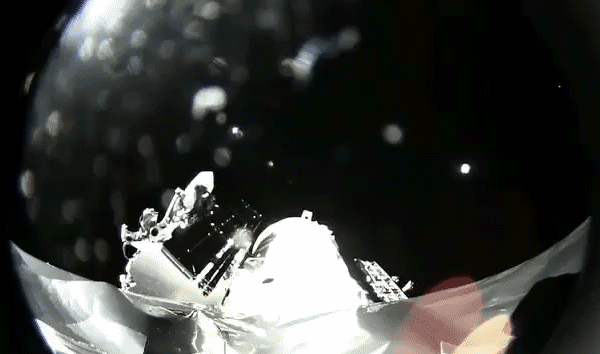

News
SpaceX preps second $500M fundraiser as Starlink & Starship make progress
According to regulatory documents seen by Prime Unicorn Index, SpaceX finished a $500M funding round begun in December 2018 and kicked off a second campaign seeking an additional $500M earlier this month.
Altogether, SpaceX appears to be on track to secure $1 billion in fresh capital in the last six months alone, a trend that that may well continue as the company pushes forth into new and capital-intensive phases of Starlink and Starship development. In Boca Chica, a flood of SpaceX engineers and technicians have descended on the area to build the first full-scale steel prototypes of Starship and the major facilities needed to support the vehicles, all from scratch. Across the West Coast of the US, a separate SpaceX team has simultaneously transitioned from prototyping and developing satellites to building a factory to mass-produce them and may be less than six weeks away from launching the first operational batch of Starlink spacecraft.
Giant rockets, giant funding
Both massive, perilous, and largely unprecedented ventures in their own right, Starship (formerly BFR) and Starlink also happen to be extremely capital-intensive, a more or less fundamental consequence of the stages of their development and expansion. Both spent many years in pure research and development phases, tinkering and experimenting with different ideas and technologies on the ground in an effort to conceptualize what exactly their final forms ought to be. This aspect of the BFR program has been extremely visible over the last three years as SpaceX and CEO Elon Musk’s goals underwent continuous semi-annual changes, often intentionally broadcasted to the public in
After appearing to finally settle on the quasi-final form of BFR (renamed to Starship/Super Heavy), SpaceX has actually begun to build and test the first full-scale, integrated prototype of the spacecraft (Starhopper) and is simultaneously building what aims to be the first orbital Starship prototype. At the same time, its propulsion system of choice – known as Raptor – has entered into serial production back at SpaceX’s Hawthorne factory, while also supporting the first Starhopper hop test in early April and preparing to continue separate ground testing.

Thousands of satellites, billions of dollars
In February 2018, SpaceX successfully launched its first Starlink satellites, two prototypes meant to test a bevy of technologies the company was attempting to build (or at least utilize) for the first time. Despite hints and reports of some problems on orbit, SpaceX firmly holds that both satellites were extremely successful in their task of proving out new technologies like electric thrusters and phased-array antennas and are still safely operating today. Just four months after those prototypes launched, CEO Elon Musk took the extraordinary step of flying to Redmond, Washington to personally challenge a number of executives he believed were operating far too sluggishly. According to secondhand reports, many of them refused to expedite the program as Musk wanted them to, resulting in their immediate firings. The challenge that triggered the organizational upheaval: launch the first operational batch of Starlink satellites before the end of June 2019, twelve months away at the time.
Five months after Musk’s challenge, SpaceX submitted a request to the FCC to modify its original Starlink constellation license, halving the orbit of the first thousand or so satellites to 550 km (340 mi) and significantly simplifying the technology on the first several dozen to be launched. As a result of the strategic changes made, SpaceX is already planning to launch its first group of Starlink satellites as early as mid-May, with perhaps one or several additional launches on the books for 2019. To an extent, the first 75 Starlink satellites and their six ground stations will be a nearly full-fidelity second prototype. Instead of a minimalist development platform like Tintin A and B, the first 75 satellites should offer opportunities to actually test the operations of a large constellation of spacecraft while also demonstrating something close to the internet connectivity the full constellation is meant to offer.

Development to production
That SpaceX is attempting to raise huge amounts of capital should come as no surprise. For almost any commercial venture on Earth that is attempting to introduce a real product from nothing, the process of going from concept, design, and testing to building a final product at scale is both extraordinarily difficult and extremely expensive. Tesla famously went through “manufacturing hell” to go from Model 3 prototypes to a mass-producible finished product, while countless other ventures don’t even make it that far (i.e. vaporware). By far the most challenging aspect of this transition is moving from a phase focused predominately on development to one focused predominately on production.
Due to an extremely unorthodox approach to building the first steel Starship and Super Heavy prototypes, quite literally choosing to do so outside and without shelter, the BFR program is probably less extreme for the time being. However, the transformation needed for Starlink to progress is intense, requiring the satellite team to essentially build a factory from scratch and begin mass-producing high-performance satellites as quickly as possible. The 75-satellite buffer should ease the pain a bit and offer a sort of trial run as SpaceX makes that major transition, but the fact remains that an unprecedented number (thousands) of satellites will need to be built and launched at an equally unprecedented pace and cost-per-unit.

The $500M raised since December 2018 will likely be a major help for SpaceX’s often-
Check out Teslarati’s Marketplace! We offer Tesla accessories, including for the Tesla Cybertruck and Tesla Model 3.
News
Tesla UK sales see 14% year-over-year rebound in June: SMMT data
The SMMT stated that Tesla sales grew 14% year-over-year to 7,719 units in June 2025.

Tesla’s sales in the United Kingdom rose in June, climbing 14% year-over-year to 7,719 units, as per data from the Society of Motor Manufacturers and Traders (SMMT). The spike in the company’s sales coincided with the first deliveries of the updated Model Y last month.
Model Y deliveries support Tesla’s UK recovery
Tesla’s June performance marked one of its strongest months in the UK so far this year, with new Model Y deliveries contributing significantly to the company’s momentum.
While the SMMT listed Tesla with 7,719 deliveries in June, independent data from New AutoMotive suggested that the electric vehicle maker registered 7,891 units during the month instead. However, year-to-date figures for Tesla remain 2% down compared to 2024, as per a report from Reuters.
While Tesla made a strong showing in June, rivals are also growing. Chinese automaker BYD saw UK sales rise nearly fourfold to 2,498 units, while Ford posted the highest EV growth among major automakers, with a more than fourfold increase in the first half of 2025.
Overall, the UK’s battery electric vehicle (BEV) demand surged 39% to to 47,354 units last month, helping push total new car sales in the UK to 191,316 units, up 6.7% from the same period in 2024.
EV adoption accelerates, but concerns linger
June marked the best month for UK car sales since 2019, though the SMMT cautioned that growth in the electric vehicle sector remains heavily dependent on discounting and support programs. Still, one in four new vehicle buyers in June chose a battery electric vehicle.
SMMT Chief Executive Mike Hawes noted that despite strong BEV demand, sales levels are still below regulatory targets. “Further growth in sales, and the sector will rely on increased and improved charging facilities to boost mainstream electric vehicle adoption,” Hawes stated.
Also taking effect this week was a new US-UK trade deal, which lowers tariffs on UK car exports to the United States from 27.5% to 10%. The agreement could benefit UK-based EV producers aiming to expand across the country.
News
Tesla Model 3 ranks as the safest new car in Europe for 2025, per Euro NCAP tests
Despite being on the market longer than many of its rivals, the Tesla Model 3 continues to set the bar for vehicle safety.

The Tesla Model 3 has been named the safest new car on sale in 2025, according to the latest results from the Euro NCAP. Among 20 newly tested vehicles, the Model 3 emerged at the top of the list, scoring an impressive 359 out of 400 possible points across all major safety categories.
Tesla Model 3’s safety systems
Despite being on the market longer than many of its rivals, the Tesla Model 3 continues to set the bar for vehicle safety. Under Euro NCAP’s stricter 2025 testing protocols, the electric sedan earned 90% for adult occupant protection, 93% for child occupant protection, 89% for pedestrian protection, and 87% for its Safety Assist systems.
The updated Model 3 received particular praise for its advanced driver assistance features, including Tesla’s autonomous emergency braking (AEB) system, which performed well across various test scenarios. Its Intelligent Speed Assistance and child presence detection system were cited as noteworthy features as well, as per a WhatCar report.
Other notable safety features include the Model 3’s pedestrian-friendly pop-up hood and robust crash protection for both front and side collisions. Euro NCAP also highlighted the Model 3’s ability to detect vulnerable road users during complex maneuvers, such as turning across oncoming traffic.
Euro NCAP’s Autopilot caution
While the Model 3’s safety scores were impressive across the board, Euro NCAP did raise concerns about driver expectations of Tesla’s Autopilot system. The organization warned that some owners may overestimate the system’s capabilities, potentially leading to misuse or inattention behind the wheel. Even so, the Model 3 remained the highest-scoring vehicle tested under Euro NCAP’s updated criteria this year.
The Euro NCAP’s concerns are also quite interesting because Tesla’s Full Self-Driving (FSD) Supervised, which is arguably the company’s most robust safety suite, is not allowed for public rollout in Europe yet. FSD Supervised would allow the Model 3 to navigate inner city streets with only minimal human supervision.
Other top scorers included the Volkswagen ID.7, Polestar 3, and Geely EX5, but none matched the Model 3’s total score or consistency across categories. A total of 14 out of 20 newly tested cars earned five stars, while several models, including the Kia EV3, MG ZS, and Renault 5, fell short of the top rating.
Elon Musk
Why Tesla’s Q3 could be one of its biggest quarters in history
Tesla could stand to benefit from the removal of the $7,500 EV tax credit at the end of Q3.

Tesla has gotten off to a slow start in 2025, as the first half of the year has not been one to remember from a delivery perspective.
However, Q3 could end up being one of the best the company has had in history, with the United States potentially being a major contributor to what might reverse a slow start to the year.
Earlier today, the United States’ House of Representatives officially passed President Trump’s “Big Beautiful Bill,” after it made its way through the Senate earlier this week. The bill will head to President Trump, as he looks to sign it before his July 4 deadline.
The Bill will effectively bring closure to the $7,500 EV tax credit, which will end on September 30, 2025. This means, over the next three months in the United States, those who are looking to buy an EV will have their last chance to take advantage of the credit. EVs will then be, for most people, $7,500 more expensive, in essence.
The tax credit is available to any single filer who makes under $150,000 per year, $225,000 a year to a head of household, and $300,000 to couples filing jointly.
Ending the tax credit was expected with the Trump administration, as his policies have leaned significantly toward reliance on fossil fuels, ending what he calls an “EV mandate.” He has used this phrase several times in disagreements with Tesla CEO Elon Musk.
Nevertheless, those who have been on the fence about buying a Tesla, or any EV, for that matter, will have some decisions to make in the next three months. While all companies will stand to benefit from this time crunch, Tesla could be the true winner because of its sheer volume.
If things are done correctly, meaning if Tesla can also offer incentives like 0% APR, special pricing on leasing or financing, or other advantages (like free Red, White, and Blue for a short period of time in celebration of Independence Day), it could see some real volume in sales this quarter.
You can now buy a Tesla in Red, White, and Blue for free until July 14 https://t.co/iAwhaRFOH0
— TESLARATI (@Teslarati) July 3, 2025
Tesla is just a shade under 721,000 deliveries for the year, so it’s on pace for roughly 1.4 million for 2025. This would be a decrease from the 1.8 million cars it delivered in each of the last two years. Traditionally, the second half of the year has produced Tesla’s strongest quarters. Its top three quarters in terms of deliveries are Q4 2024 with 495,570 vehicles, Q4 2023 with 484,507 vehicles, and Q3 2024 with 462,890 vehicles.
-

 Elon Musk4 days ago
Elon Musk4 days agoTesla investors will be shocked by Jim Cramer’s latest assessment
-

 News1 week ago
News1 week agoTesla Robotaxi’s biggest challenge seems to be this one thing
-

 Elon Musk2 weeks ago
Elon Musk2 weeks agoFirst Look at Tesla’s Robotaxi App: features, design, and more
-

 News2 weeks ago
News2 weeks agoSpaceX and Elon Musk share insights on Starship Ship 36’s RUD
-

 News2 weeks ago
News2 weeks agoWatch Tesla’s first driverless public Robotaxi rides in Texas
-

 News1 week ago
News1 week agoWatch the first true Tesla Robotaxi intervention by safety monitor
-

 News2 weeks ago
News2 weeks agoTesla has started rolling out initial round of Robotaxi invites
-

 Elon Musk2 weeks ago
Elon Musk2 weeks agoTesla to launch in India in July with vehicles already arriving: report


















